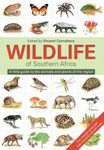By: Philip Ashmole(Author), Myrtle Ashmole(Author)
400 pages, colour photos, colour maps
![Natural History of Tenerife Natural History of Tenerife]()
Click to have a closer look
About this book
Contents
Customer reviews
Biography
Related titles
About this book
Tenerife is a remarkable island, dominated by Mount Teide, an active volcano higher than any mountain in mainland Spain. The island has extraordinary volcanic landscapes, and thousands of species of plants and animals that are found only there.
The authors' love of Tenerife stems from its enormous variety of habitats with their complex plant and animal communities. They have explored the island from the laurel forests of eastern Anaga to the cliffs of Los Gigantes in Teno, from the semi-deserts of the extreme south to the richly vegetated slopes along the north coast, and from remote black sand beaches to the lavas of Las Canadas and the craters of Teide and Pico Viejo. Local Spanish experts have guided them to remote places and have contributed accounts of their own special interests.
Introductory chapters discuss the extinct mammals, birds and reptiles, the island's ecology and the impact of people. The five main types of landscape (ecosystems) are then considered; coastal and lowland shrubland; dry woodland remnants; laurel forest; pine forest and high mountain shrubland. Some special habitats are also described including the lava flows and volcanic caves, with their unique highly adapted invertebrate animals.
Both vertebrates and invertebrates are treated systematically while photographs and brief descriptions of hundreds of endemic species of plants are included enabling easy identification. The island's geology is also featured, in an account that covers both the oceanic context of the Canaries archipelago and the complex history of Tenerife itself, one of the most intriguing and most studied of all volcanoes.
This comprehensive text provides a readily accessible and full account of an extraordinary island, referred to by Charles Darwin as 'perhaps one of the most interesting places in the world'.
Contents
Acknowledgements ix
Preface xi
Note on names and terms xiii
Box: Historical snapshot of biological investigation on Tenerife xv
Map: Tenerife Featured Sites xvi
1. The physical environment and arrival of life 1
2. Ecology of Tenerife 31
3. Coastal and lowland shrubland - 'matorral costero' 39
4. Dry woodland remnants - 'bosque termofilo' 84
5. Laurel forest - 'monteverde' 157
6. Pine forest - 'pinar' 199
7. High mountain shrubland - 'matorral de cumbre' 237
8. Lava flows, cinders and caves 275
9. Freshwater habitats 285
10. Birds, mammals and other vertebrates 289
11. Butterflies, dragonflies and other invertebrates 325
12. Geology 347
13. Directions to featured sites 378
Further reading 386
Index 389
Customer Reviews
Biography
Philip & Myrtle Ashmole are biologists who have worked on islands in many parts of the world. They have published numerous scientific articles and are the authors of Natural History Excursions in Tenerife; St. Helena and Ascension Island: A Natural History and The Carrifran Wildwood Story. In 2015, Philip and Myrtle received a Lifetime Achievement Award at the RSPB Nature of Scotland Awards.
By: Philip Ashmole(Author), Myrtle Ashmole(Author)
400 pages, colour photos, colour maps
"[...] This new book represents one of the best compilations of less well-known elements of the flora and fauna of the Canary Islands, describing invertebrates and ferns as well as the better-known birds and trees. The resulting package will appeal to amateur naturalists and professional biologists alike. [...]"
– Marcel Gil Velasco, British Birds, Volume 110, February 2017







































